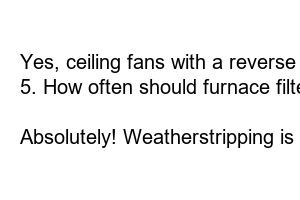난방비 아끼는 법
Title: How to Save on Heating Costs: Simple Tips to Keep Your Home Warm and Wallet Happy
Introduction:
Winter is upon us, and while cozying up indoors sounds wonderful, the thought of skyrocketing heating bills can dampen the mood. However, with a few smart and simple strategies, you can stay warm without breaking the bank. In this article, we’ll explore effective ways to save on heating costs, allowing you to embrace the warmth while keeping your budget intact.
1. Embrace Insulation: A Barrier Against the Chill
By adequately insulating your home, you create a protective barrier against the cold. Seal gaps in windows and doors with weatherstripping or caulk to prevent drafts. Additionally, consider adding insulation to your attic or walls to retain heat. Proper insulation ensures warmth stays inside, reducing the amount of energy needed to keep your home cozy.
2. Optimize Your Thermostat: Control at Your Fingertips
Invest in a programmable thermostat that allows you to adjust temperature settings throughout the day. Lower the temperature when you’re away from home or sleeping, and raise it when you’re active. This simple step can significantly reduce your heating costs, as each degree you lower the thermostat can save around 1-3% on your energy bill.
3. Layer Up: Warmth in Dress and Decor
Instead of cranking up the heat, **bundle up in comfortable sweaters, cozy socks, and warm blankets**, allowing you to lower the thermostat without sacrificing comfort. Consider adding area rugs to insulate your floors, preventing heat loss. Thick curtains or cellular blinds also act as an extra layer of insulation, keeping the chill out and warmth in.
4. Harness the Sun’s Power: Free Heat Source
During daylight hours, open your curtains or blinds to let the sun’s rays naturally warm your home. This passive heating method costs nothing and effectively raises the indoor temperature. As dusk falls, remember to close them to retain the heat.
5. Maintain Heating Systems: Efficiency is Key
Regular maintenance of your heating systems is essential to achieve optimal efficiency. Clean or replace filters regularly to ensure proper airflow, preventing energy waste. Additionally, consider having a professional tune-up your heating unit every year to identify any issues and maximize its efficiency.
6. Zone Heating: Warmth Where You Need It Most
Rather than heating your entire home, **consider using space heaters in frequently occupied rooms**. This allows you to maintain a comfortable temperature in the areas you spend the most time in, while keeping the rest of the house cooler. Exercise caution when using space heaters, ensuring they are placed away from flammable objects and never left unattended.
Summary:
Saving on heating costs is easier than you may think. By insulating your home, optimizing your thermostat, layering up, harnessing the sun’s power, maintaining your heating systems, and employing zone heating, you can enjoy a comfortably warm space without breaking the bank. Implement these strategies and watch your heating bills plummet while you enjoy a cozy and wallet-friendly winter.
FAQs:
1. Can closing vents in unused rooms help save on heating costs?
Closing vents in unused rooms can indeed save energy by directing heat to the areas that need it most. However, be cautious as it can put strain on your heating system if done excessively.
2. Does lowering the temperature at night save energy?
Yes, lowering the temperature at night or when you’re away can result in significant energy savings. Programmable thermostats make it easy to adjust temperatures according to your schedule.
3. Is it cost-effective to use a fireplace as a primary heating source?
While fireplaces create a cozy ambiance, they are not the most efficient heating source. They may even draw warm air out of your home. Consider using them as supplementary heating, rather than relying on them solely.
4. Do ceiling fans help in reducing heating costs?
Yes, ceiling fans with a reverse function can be used in winter to circulate warm air, reducing the strain on your heating system. Just remember to set them to rotate clockwise at a low speed.
5. How often should furnace filters be replaced?
To ensure optimal airflow and energy efficiency, it’s recommended to replace or clean your furnace filters every one to three months. However, this may vary depending on usage and the type of filter.
6. Can weatherstripping help reduce drafts?
Absolutely! Weatherstripping is an excellent way to seal gaps and prevent drafts around windows and doors. It helps to keep warm air in and cold air out, saving on heating costs.

